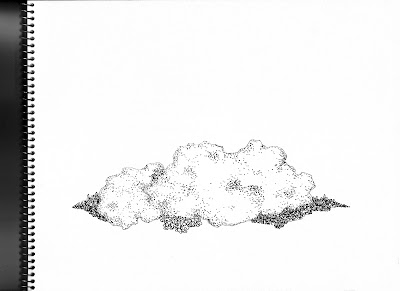If you want to avoid the traffic crunch at Los Banos, you may want to go over the top - that is, pass through the legendary Mount Makiling. Take a right turn at the intersection in front of the Los Banos Elementary School, before you hit the Los Banos town proper.

Drive on.
Enjoy the scenic view of the mountain.
Until you reach this point,

where the steel gates indicate the exact location of the Magnetic Hill.

At this downhill incline,

step on your vehicle's brake.
Turn off the ignition key.
Shift the gear to neutral.
And feel your vehicle being pulled backward and upward by some mysterious magnetic force.
Your vehicle will be pulled backward faster and faster until you step hard on the brake.
It seems weird. But it's amazing.
Having experienced that strange phenomenon, you may now drive on to your destination.
Be cafeful of the sudden twists and turns along the way, especially at the inclines.


Then you will pass through the Boy Scouts of the Philippines Jamboree Site.


Continue driving on until you hit the University of the Philippines Los Banos campus, where you may exit either at the main gate near Grove or at the alternative gate near the International Rice Research Institute.
Coming back, you may want to pass this way again.

Stop at the Magnetic Hill.

Set up your vehicle at the downhill incline.
And feel the strange sensation of being pulled backward and upward once again while gazing at the Laguna de Bay at the far horizon.

25 October 2011

Drive on.
Enjoy the scenic view of the mountain.
Until you reach this point,

where the steel gates indicate the exact location of the Magnetic Hill.

At this downhill incline,

step on your vehicle's brake.
Turn off the ignition key.
Shift the gear to neutral.
And feel your vehicle being pulled backward and upward by some mysterious magnetic force.
Your vehicle will be pulled backward faster and faster until you step hard on the brake.
It seems weird. But it's amazing.
Having experienced that strange phenomenon, you may now drive on to your destination.
Be cafeful of the sudden twists and turns along the way, especially at the inclines.


Then you will pass through the Boy Scouts of the Philippines Jamboree Site.


Continue driving on until you hit the University of the Philippines Los Banos campus, where you may exit either at the main gate near Grove or at the alternative gate near the International Rice Research Institute.
Coming back, you may want to pass this way again.

Stop at the Magnetic Hill.

Set up your vehicle at the downhill incline.
And feel the strange sensation of being pulled backward and upward once again while gazing at the Laguna de Bay at the far horizon.

25 October 2011















































